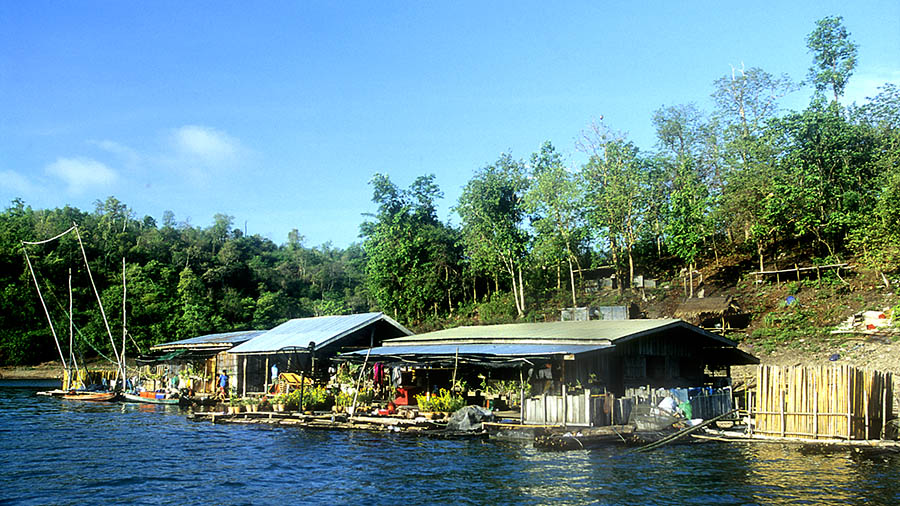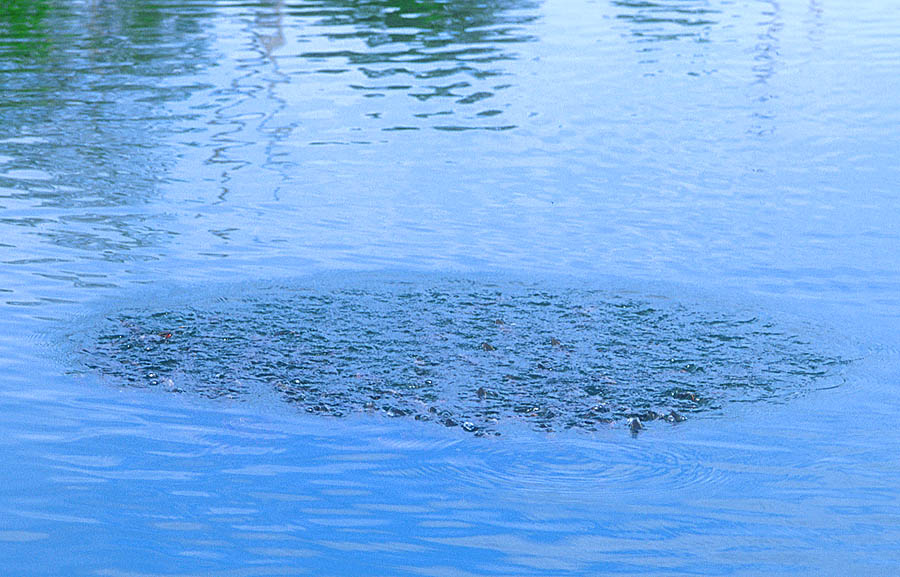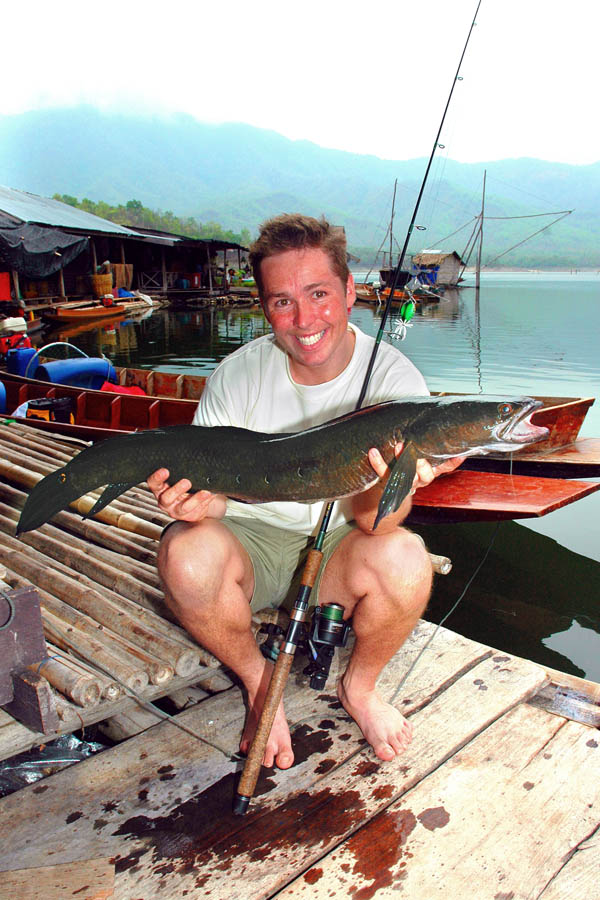 (2002) It has been my intention to fish for Thailand's freshwater species for several years, but I have sort of been waiting for an opportunity. The opportunity presented itself this spring, when a friend of mine was stationed in Bangkok for a period of 6 months. I already had a good connection to a French guy, Jean-Francois Helias, who has spent the last 16 years in Thailand organizing fishing especially at the famous Bung Sam Lan lake on the outskirts of Bangkok.
(2002) It has been my intention to fish for Thailand's freshwater species for several years, but I have sort of been waiting for an opportunity. The opportunity presented itself this spring, when a friend of mine was stationed in Bangkok for a period of 6 months. I already had a good connection to a French guy, Jean-Francois Helias, who has spent the last 16 years in Thailand organizing fishing especially at the famous Bung Sam Lan lake on the outskirts of Bangkok.
Jean-Francois asked me what my preferred type of fishing is, and I had to admit that I would rather fish for wild species in wild nature, than fish the lake, if I had the chance. Fortunately Jean-Francois understood my desire perfectly, and then invited me to join him and his friend, Pierre, on an adventure to fish Thailand's two biggest freshwater reservoirs - in the jungle!
That opportunity was quite impossible to turn down...
Tour de Thailand We fished the reservoirs Sri Nakharin about 250 km northwest of Bangkok, and Khao Laem about 300 km west of Bangkok, near the border to Burma. We had 10 days to do this, and we fished at both the reservoirs and the rivers and canals in association with reservoirs. After that we were to spend a day at Bung Sam Lan lake, which would be a pity to miss nevertheless, now that I were in Thailand anyway.
We fished the reservoirs Sri Nakharin about 250 km northwest of Bangkok, and Khao Laem about 300 km west of Bangkok, near the border to Burma. We had 10 days to do this, and we fished at both the reservoirs and the rivers and canals in association with reservoirs. After that we were to spend a day at Bung Sam Lan lake, which would be a pity to miss nevertheless, now that I were in Thailand anyway.
Floating bamboo huts
I hadn't realised from the beginning, exactly what the area would be like, where we were going to fish, but to my great enthusiasm I found that we were actually going to live in and fish in the jungle itself - something not many Europeans have done before us. We stayed with a local family, whose floating bamboo huts were in essence a trading station for local fishermen. The fishermen trade their catch for daily goods, food, gasoline, drinks...
This little community of huts, platforms, kitchens, bedrooms and toilets, is held up by huge bundles of giant bamboo, and tied to trees on the bank of the jungle. The atmosphere was superb, with children playing and people milling about, taking care of their daily chores. On top of all, this is the only place with a generator for about a hundred miles, so people came from everywhere to watch television each night.
 Besides I got to see scores of weird and wonderful fish species, caught by the local fishermen...
Besides I got to see scores of weird and wonderful fish species, caught by the local fishermen...
The snakehead quest
To Jean-Francois hunting snakeheads is the ultimate spin fishing – and, he's bloody good at it. I must confess that at first I didn't share his enthusiasm for this species, but I definitely changed my mind, realising that my lack of interest was of pure ignorance.
We had the chance to catch three different species of snakeheads, where one of them in particular is of great interest – mainly because it grows much bigger, hence its name "giant snakehead" (Channa micropeltes). Snakeheads look, as their name suggest, like short and compact snakes with fins – and just as cuddly as cobras.
The snakeheads are extremely fierce, territorial and aggressive creatures – they use any opportunity to lash out and bite whatever might find its way into their territory, and that goes for any size of intruder, even people. The local fishermen use nets, mostly, but some of them are very skilled divers as well. How they manage to cope in the muddy water is totally beyond me, but they catch great big fish on spear, nevertheless. The divers told about several incidents, when they were attacked by protecting mother fish, after missing the fish with their spear - resulting in bite marks in their faces and mangled dive masks.
This fish is definitely worth fishing for!
The fishing for snakeheads is in essence top-tuned pike fishing. Baits and methods are similar to pike fishing, but due to the snakeheads' power compared to size, and the fact that snakeheads' preferred habitat is in sunken forests, there are more critical demands on the tackle and technique. We used 30 lbs limp braided line and four times strength treble hooks, and we fished primarily with surface or shallow going plugs and frog replicas with a frontal spinner-blade.
 When you have hooked one of these creatures there is only one technique, that will give you a relatively fair chance of landing it, and that's "hook & hold" – or else you will certainly get either snapped or loose the hook-hold in the sunken trees and branches. This also produced some incredibly exciting fights, where water splashed everywhere and the rod bend to its extreme limits.
When you have hooked one of these creatures there is only one technique, that will give you a relatively fair chance of landing it, and that's "hook & hold" – or else you will certainly get either snapped or loose the hook-hold in the sunken trees and branches. This also produced some incredibly exciting fights, where water splashed everywhere and the rod bend to its extreme limits.
In the pursuit of snakeheads, I was introduced to a type of fishing I have never seen before, anywhere, in all my years of fishing travel. It is what the locals call "luk krok", which roughly translated means "ball of fish fry". It is the giant snakeheads way of parental care, where the mother and father patrol around their young ones, who form a big ball in the water. This ball of about a couple of hundred fry is visible, when they are foraging on smaller fish and insects in the surface –his looks like the water starts boiling in an area of roughly 30 square feet.
Now you must be ready to cast – cast just past the boiling, and retrieve your bait as fast as you can through the "ball of fish fry". That's when the fishing starts to "rock and roll", as Jean-Francois would put it. The fast moving lures infuriate the parent fish to extremes, believing their babies are under attack by other predators, so they charge this intruding element with a fierceness rarely seen in fish.
We even get some of the fry taking the big plugs, easily twice their own size – and we had one adult charging the bait, missing it, and slamming in to the side of the boat with considerable force. When we catch a parent fish under these circumstances, we always return the fish straight away.
We caught several giant snakeheads, losing as many in the strike. The biggest we caught weighed 13½ lbs.
